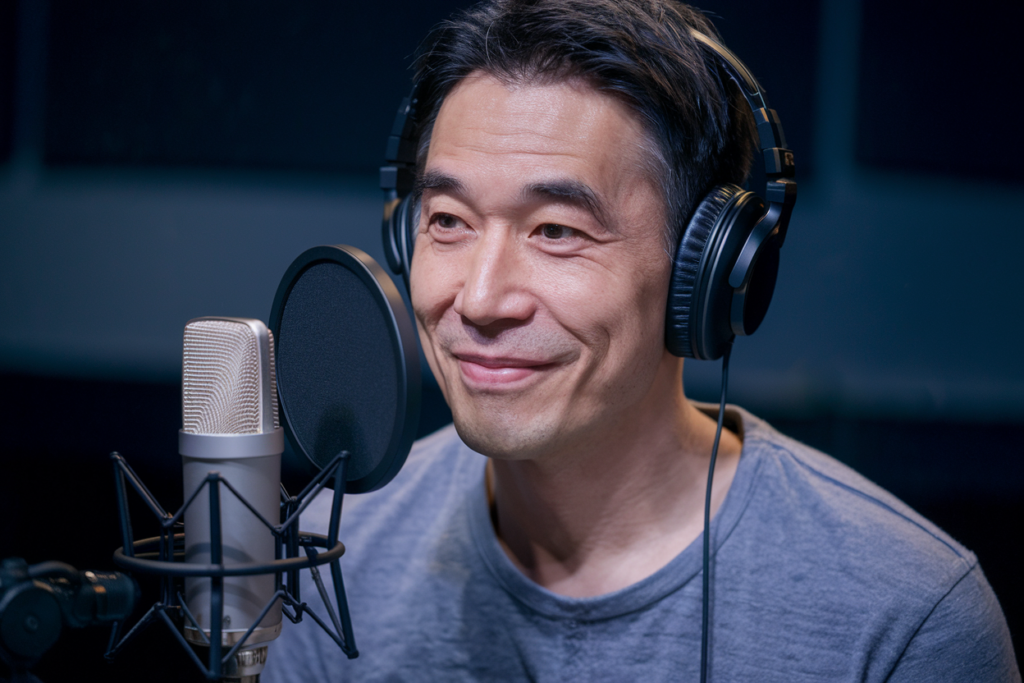Key Takeaways
- Authenticity in Dubbing: Successful Japanese video dubbing relies on translating and adapting content while preserving the original’s spirit, ensuring a seamless viewer experience.
- Quality Matters: High-quality voiceovers enhance engagement and emotional connection. Select skilled voice talent who can effectively convey tone and emotion.
- Cultural Sensitivity: Understanding cultural nuances is crucial; humor, idiomatic phrases, and societal norms must be adapted for local audiences to resonate effectively.
- Voice Acting Techniques: Strong voice acting skills are essential for conveying emotions accurately. Versatile actors can switch between characters to maintain audience engagement.
- Synchronization is Key: Precise synchronization of voiceovers with visual elements is vital for creating an immersive viewing experience. Utilize advanced audio editing software to achieve this.
- Invest in Tools & Hardware: Quality dubbing requires appropriate software (like Adobe Audition or Audacity) and hardware (such as condenser microphones and audio interfaces) to support professional results.
Ever wondered how to make your Japanese video dubbing sound authentic and engaging? You’re not alone! Many creators struggle with capturing the essence of the original content while ensuring their voiceovers resonate with viewers.
Understanding Japanese Video Dubbing
Japanese video dubbing involves translating and adapting content while maintaining the original’s spirit. It’s crucial to create a seamless experience for viewers, ensuring that voiceovers resonate with the audience.
Importance of High-Quality Dubbing
High-quality dubbing transforms a viewing experience. Quality affects engagement, comprehension, and emotional connection. Poor voiceovers can lead to confusion or disengagement. Using skilled voice talent enhances authenticity, making characters relatable and dialogues believable. When selecting a voice artist, consider their ability to convey emotion and tone effectively, matching the original performance.
Cultural Considerations in Dubbing
Cultural nuances play an essential role in successful dubbing. Differences in humor, expressions, and societal norms must be respected and reflected through the script and delivery. A talented voice actor understands these subtleties, ensuring that jokes land as intended and sentiments resonate with the local audience. Be aware of idiomatic phrases; direct translations may not have the same impact in another culture. Adapting language while preserving intent is key for effective communication in dubbed content.
Techniques for Effective Dubbing
Dubbing Japanese video content requires skillful techniques to ensure authenticity and engagement. Here are key approaches to consider.
Voice Acting Skills
Voice acting skills play a crucial role in effective dubbing. A skilled voice actor must convey emotions, tone, and character nuances accurately. They should adapt their performance to match the original intent while considering cultural context. Strong voice talent possesses versatility, allowing them to switch between different characters seamlessly. Engaging delivery captures viewer attention and enhances emotional connection with the narrative.
Synchronization with Visuals
Synchronization with visuals is vital for creating an immersive experience. The timing of the voiceover must align perfectly with mouth movements and actions on screen. This meticulous process ensures that dialogue flows naturally within scenes, preventing distractions for viewers. Using technology like advanced audio editing software can help achieve precise synchronization. When done right, this technique makes the dubbed version feel as authentic as the original content, enhancing overall enjoyment for your audience.
Tools and Software for Dubbing
Selecting the right tools and software is essential for achieving high-quality Japanese video dubbing. The right resources ensure that your voiceovers resonate with audiences while maintaining the integrity of the original content.
Recommended Dubbing Software
Consider using these popular software options for effective dubbing:
- Adobe Audition: This industry-standard audio editing software provides powerful features like multitrack editing, noise reduction, and effects processing to enhance your voiceovers.
- Audacity: A free, open-source option perfect for beginners. It offers a range of basic audio editing tools suitable for recording and mixing voice talents.
- Reaper: Known for its flexibility, Reaper supports various plugins and allows seamless integration of different audio formats, making it ideal for complex dubbing projects.
- Pro Tools: Widely used in professional studios, Pro Tools offers advanced capabilities such as real-time collaboration and extensive plugin support to refine your voice actor’s performance.
Each of these programs has unique strengths. Choose one that fits your specific needs to ensure an efficient workflow.
Hardware Requirements for Optimal Dubbing
Investing in quality hardware enhances the overall dubbing experience. Here’s what you’ll need:
- Microphone: A condenser microphone captures detailed sound nuances from your voice artist. Look for models known for clarity and low self-noise.
- Audio Interface: An interface connects your microphone to your computer while improving sound quality through better preamps and converters.
- Headphones: Closed-back headphones minimize sound leakage during recording sessions, allowing precise monitoring of voiceovers without distractions.
- Pop Filter: This accessory reduces plosive sounds (like ‚p‘ or ‚b‘) that can disrupt recordings. It’s an inexpensive yet essential tool in any dubbing setup.
When you invest in quality tools and hardware, you’re setting up a foundation that allows talented voice actors to deliver their best performances consistently.
Common Challenges in Japanese Video Dubbing
Japanese video dubbing presents unique challenges that can impact the overall quality of your project. Understanding these challenges helps ensure a more authentic and engaging experience for viewers.
Language Nuances and Dialects
Japanese features various dialects, each with distinct expressions and tones. Adapting voiceovers to reflect regional differences adds complexity to the dubbing process. For instance, a voice actor might need to adjust their delivery based on whether they’re portraying a character from Tokyo or Osaka. This attention to detail enhances authenticity but requires skilled voice talent who understands these nuances.
Maintaining Original Emotion in Dubs
Capturing the original emotion in dubbed content proves vital for viewer engagement. Voice actors must convey feelings such as humor, sadness, or excitement while ensuring their performance aligns with the original intent. It’s not just about translating words; it’s about embodying the characters’ emotions through voiceovers. A talented voice artist can bring depth to a character’s journey without losing its essence, making this aspect crucial for effective dubbing.
Conclusion
Mastering Japanese video dubbing is a blend of art and technique. By focusing on voice acting skills cultural nuances and the right tools you can elevate your work to resonate deeply with viewers. Remember that authenticity matters; it’s not just about translating words but capturing the essence of emotions and expressions.
Invest in quality equipment and software to ensure your dubbing aligns perfectly with visuals while maintaining high standards. Keep honing your craft by understanding regional dialects and humor as these elements are key to creating engaging content. With dedication and the right approach you’ll create dubbed videos that connect with audiences and preserve the original’s spirit, making your projects truly stand out.
Frequently Asked Questions
What is Japanese video dubbing?
Japanese video dubbing is the process of translating and adapting original content into Japanese while maintaining the essence and emotional tone. It ensures that voiceovers resonate with local audiences, creating an engaging viewing experience.
Why is high-quality dubbing important?
High-quality dubbing enhances viewer engagement, comprehension, and emotional connection. Poor voiceovers can lead to confusion or disengagement, making it essential for creators to select skilled voice talent for authenticity and impact.
What are some challenges faced in Japanese video dubbing?
Challenges include navigating language nuances, regional dialects, and cultural references. Maintaining the original emotion while ensuring accurate adaptation requires skilled voice actors who understand these complexities.
What techniques are used for effective dubbing?
Effective dubbing techniques involve accurately conveying emotions and character nuances while synchronizing voiceovers with visuals. Utilizing advanced audio editing technology also helps achieve precise timing for a seamless experience.
Which software is recommended for Japanese video dubbing?
Popular software options include Adobe Audition, Audacity, Reaper, and Pro Tools. Each offers unique strengths suited to different aspects of the dubbing process, allowing creators to choose based on their specific needs.
What hardware is necessary for quality video dubbing?
Essential hardware includes a condenser microphone, audio interface, closed-back headphones, and a pop filter. Investing in quality equipment supports voice actors in delivering consistent performances throughout their work.
How do dialects affect Japanese video dubbing?
Dialects add complexity to the dubbing process as they require adaptations that reflect regional differences—like those between Tokyo and Osaka—to ensure authenticity and relatability within the localized content.
Why is understanding cultural context crucial in dubbing?
Understanding cultural context allows voice actors to navigate humor, expressions, and societal norms effectively. This knowledge ensures that dubbed content resonates with local audiences while staying true to the original intent.







